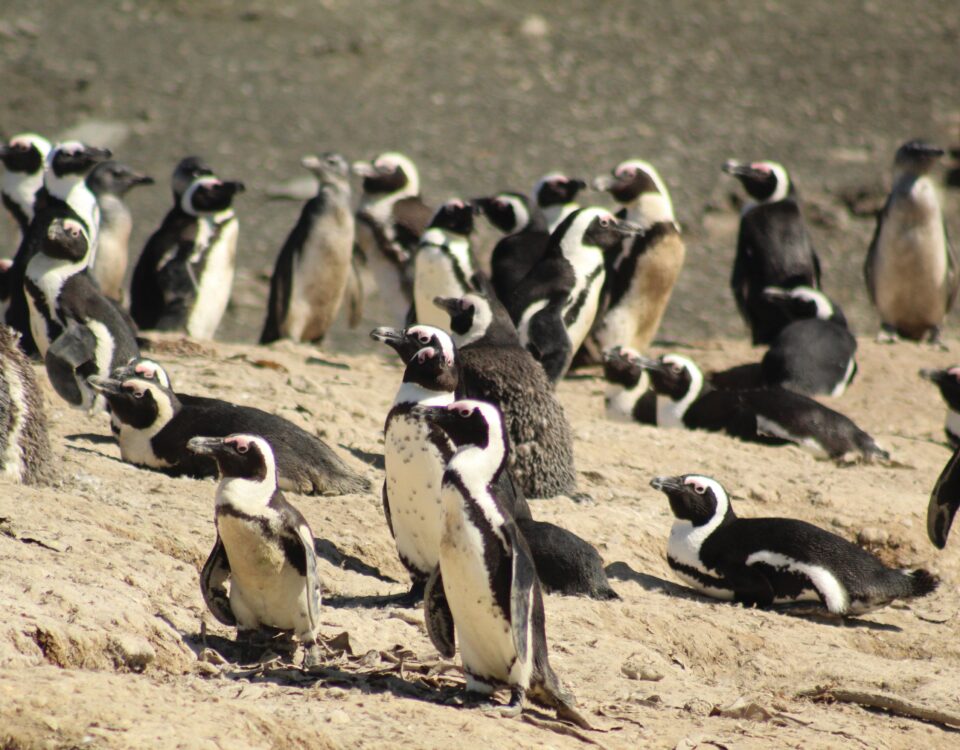Go Green Fund in Namibia: Nedbank Namibia and NNF partnering for Namibia
July 15, 2012NNF/Avis Environmental Education Fund – To promote increased awareness and environmental education
July 15, 2012Scientist, conservationist and specialist tour guide, Hu Berry was one of Venture Publications’ most valued authors.
From his experience in conservation he provided incisive, atmospheric and artistically crafted articles pertaining to the Namibian environment, ranging from the effects of climate change to the wanderlust of coastal lions, the desert-adapted elephants of the Kaokoland, the role of lichens in the Namib ecosystem, and even the wrecks of the Skeleton Coast. His loss is sadly mourned by all of us at Venture Publications who had the privilege of working with him.
Hu Berry was born in 1939 in Humansdorp in the Eastern Cape.
He matriculated at Pretoria Boys’ High and qualified as an entomologist and zoologist at the University of Pretoria. His first employment was at the South African Bureau of Standards where he tested pesticides, after which he spent five years working on pest control in the USA, Europe, Middle East and Africa.
He met his wife Conny in Pretoria and followed her to Namibia, her home country, where they married in 1969.
The couple had two sons, Mark and Paul.
The Environment and Tourism authorities of the time appointed Hu as ornithologist and chief biologist in the Etosha National Park.
Here, conducting studies on birds, herbivores and carnivores, he soon rose to become control warden. In this period he did detailed studies on flamingos, pelicans and cormorants, obtaining an MSc degree with distinction on ‘The Ecology and Physiology of the Cape Cormorant’.
He witnessed historic events such as the mass accumulation of over a million greater and lesser flamingos on the Etosha Pan, which was followed by a mass breeding of white pelicans. For his work on wildebeest on the vast plains surrounding the Etosha Pan, he earned his PhD.
Possibly the most memorable project of his career was the post-doctoral research he carried out on the ecology, behaviour and population dynamics of Etosha’s lions.
An offshoot of this work was when he and his friend, the gynaecologist Jock Orford, implanted hormonal contraceptives in a number of lionesses to control population growth as an alternative method of controlling lion populations rather than culling them.
Dubbed by the media as ‘Lionesses on the Pill’, this work garnered him and his team worldwide recognition as pioneers of this innovative approach to wildlife management. He subsequently presented his findings at international symposiums on wildlife.
After leaving Etosha, he did further service as chief biologist of the Namib-Naukluft Park. Following his ‘retirement’ after 33 years at the Ministry of Environment and Tourism (MET), he practised as a freelance specialist tour-guide in the Namib Desert and Etosha National Park, based in Swakopmund, having trained tour guides at the Namibian Academy of Tourism and Hospitality, and himself qualified as a Badge III (Specialist Guide) on the Namib, Etosha, ornithology, fauna and ecology.
In 2006 Hu was nominated by Wanderlust Publications in the United Kingdom for the prestigious Paul Morrison Award, which is aimed at naming the world’s best guides.
Said his sons, Mark and Paul Berry, “Hu was a deeply caring father and husband. When our mother Conny fell ill, it affected him severely. Conny’s passing earlier this year signalled an end for him too, and his health started to deteriorate. His earthly life came to an end as he would have wanted it: in the peace of the African bush at sunset with a group of friends.
In the words of John Muir: ‘I only went out for a walk, and finally concluded to stay out till sundown, for going out, I found, was really going in.’”
Said Peter Tarr, a personal friend and professional colleague, “With the death of Hu Berry, Namibia has lost intellectual leadership in the field of conservation and tourism. In many ways it signifies the end of an era. People of that calibre are hard to replace.”
Peter said that one of Hu’s earliest contributions was made du-ring his work with wildebeest. “He realised that a major management challenge in African parks was that animals such as wildebeest needed more space in which to migrate and move.” Peter described Hu as a key figure in enlightening the public about the beauty and great value of the Namib Desert. “He reminded us that where people tend to think of desert as a useless wasteland, the Namib is a resource we should not sell cheaply and allow to be degraded. It is one of our most valuable assets.”
Commented Yanna Erasmus, a friend and admirer of the biologist, “Dr Hu Berry was the most special of scientists because at his heart was peace and kindness to animals. He did not see them as a means to a scientific end. His loss is a loss to all, not only in Namibia.”
Steve Brain, a well-known ornithologist who occasionally worked with Berry, described him was ‘an upright ambassador’ and a ‘staunch conservationist’ for Namibia’s wilderness and animals, even after he left the MET.
This article appeared in the 2012 edition of Conservation and the Environment in Namibia.




